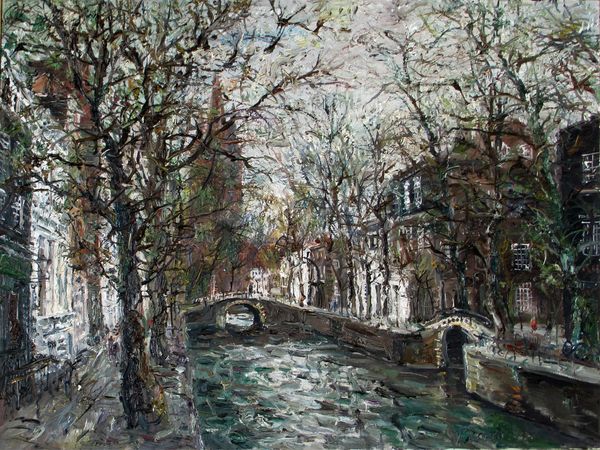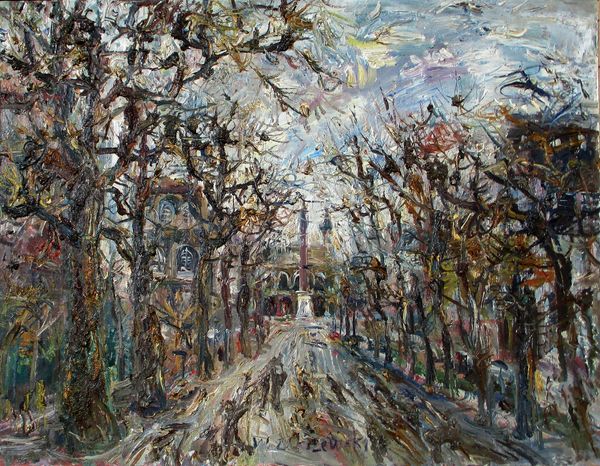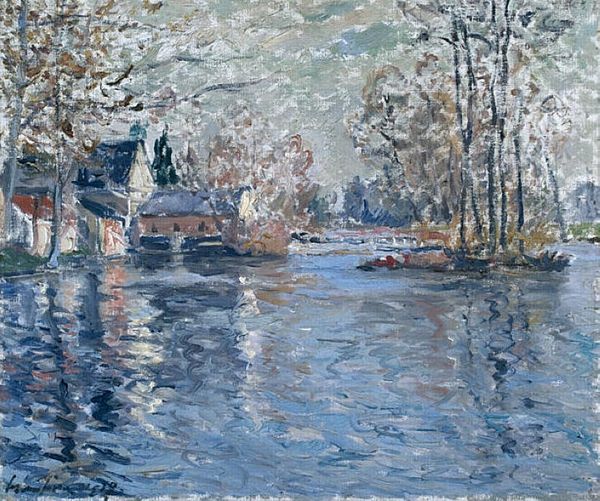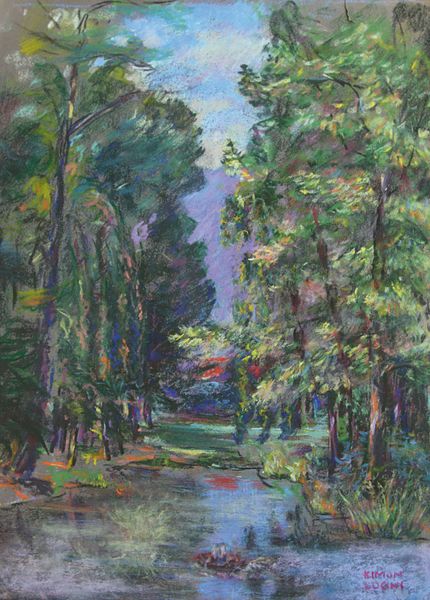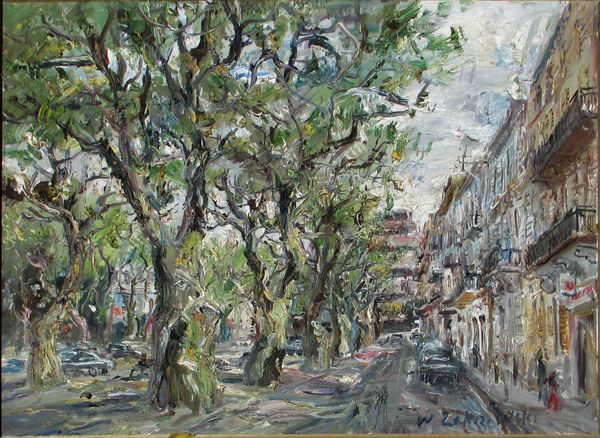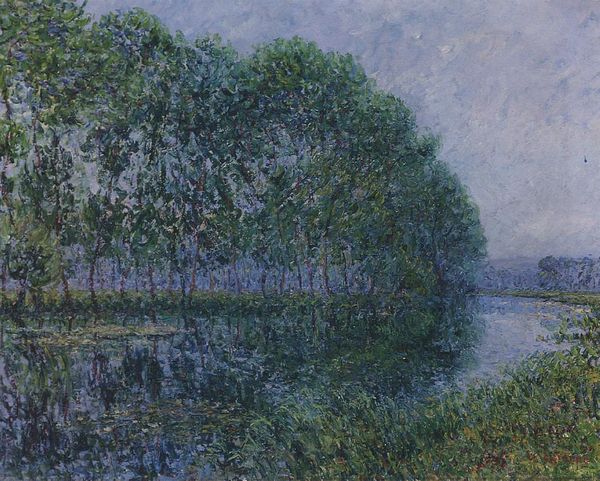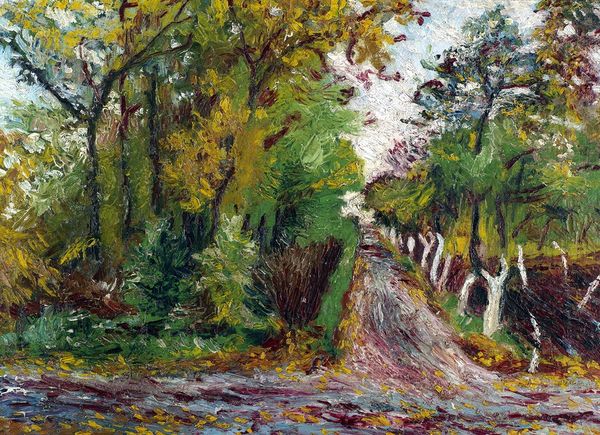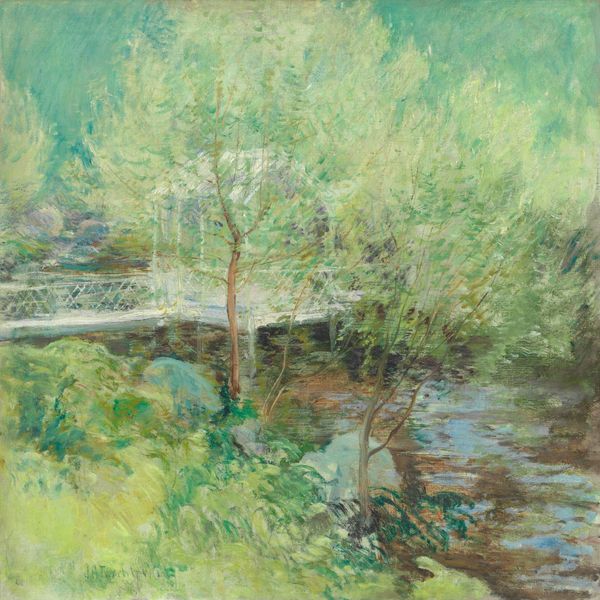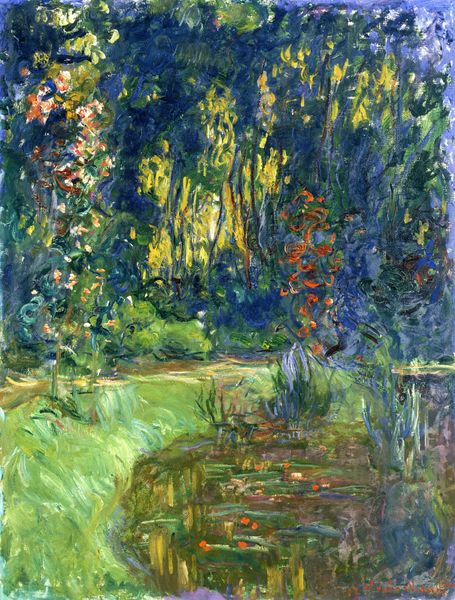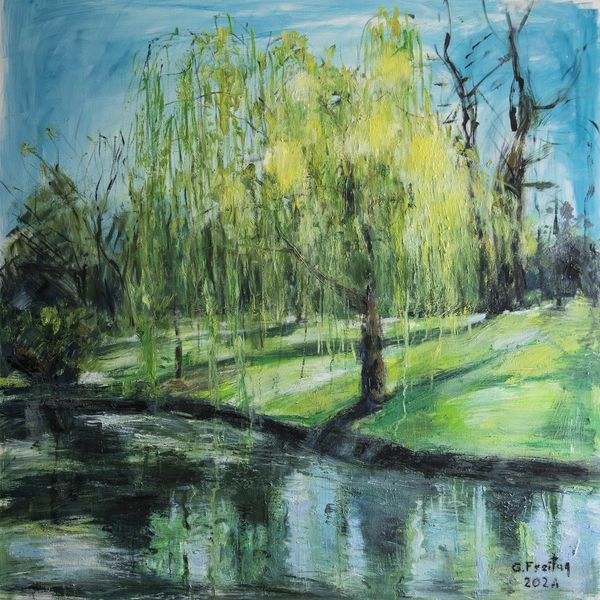
Dimensions: 73 x 92 cm
Copyright: Private collection copyright
Curator: Włodzimierz Zakrzewski's "Utrecht," created in 1978 with acrylic paint, offers a cityscape framed by trees and reflected in the still waters of a canal. What strikes you initially about the painting? Editor: Immediately, it's the almost oppressive atmosphere. The heavy impasto technique creates a sense of tangible weight, the light struggling to penetrate the scene. It feels almost suffocating. Curator: That tactile quality echoes a longing. Canal scenes often symbolize journeys and connections, but the obscured buildings suggest fading memory. Do you think there's an attempt here to grasp a receding past through familiar archetypes? Editor: Interesting thought! I am more fascinated by the structure—notice how the vertical thrust of the trees, especially bare branches on the right, compete against the dominant horizontal canal. It generates this visual tension; a feeling of static potential versus languid movement. The composition denies the easy balance. Curator: I wonder if that denial mirrors the tensions between natural elements, represented by the trees, and constructed urban space? Trees often stand for nature and the passage of time, providing a stable cultural continuity; how do they work to achieve it here? Editor: Ah, for me they function less symbolically and more formally. Zakrzewski uses the textures and directional lines of the trees to actively guide your eyes back into the central space behind the bridge. Consider also that muted palette; brown, gray, moss green. It reinforces an oppressive or melancholic tone by minimizing vibrancy or sharp contrasts. Curator: A visual rhyme there: perhaps a shared sensibility for subtle transitions over dramatic contrast speaks to the artist’s overall feeling for his subject. And the symbol of water, usually equated to life and change, seems stagnant, mirroring the stillness. Editor: Yes, the water, instead of providing liberation, acts almost like a reflecting tomb. The way the water multiplies the details while at the same time obscuring them is so powerful, right? Almost a self-defeating movement in terms of creating perspective or hope. Curator: Perhaps. After examining the painting, I sense the work invites contemplation on how personal history blends with our shared sense of place, how landscape might exist as a tangible bridge between external observation and interior landscape. Editor: And for me, "Utrecht" confirms the way that material manipulation – texture, color, composition – powerfully influences psychological response irrespective of cultural symbolism.
Comments
No comments
Be the first to comment and join the conversation on the ultimate creative platform.
